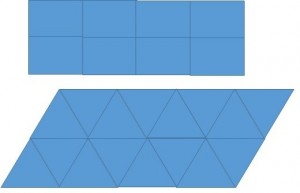We looked at demand planning, which is a model to try and create reliable forecasts. So we got put into pairs and were given four sheets with certain foods and drinks which we could buy and therefore sell in our shops. It was spread out throughout a year and split into quarters.
We looked at what time of year it was and tried to make predictions on what items would sell most and what items would not sell. Every quarter, the prices of the items changed due to the season it was. We started with buying everyday items which we knew people would be buying on a regular bases. Then we noticed that the best way to choose what items we were going to buy was looking at the profit percentage that we were going to make. We finally got the hang of it and realised that baked beans were a 200% profit and therefore, even if most of them did not sell, you would still be guaranteed a profit, but luckily for us, 90% of them sold, and we turned 45,000 pounds into 250,000. At Christmas time, it was obvious that turkeys were going to sell and therefore we put nearly all our money into them, which of course is unrealistic in real life as you wouldn’t have sold such a large amount of turkeys, but as they were selling in percentages and not in numbers, we knew we would make a lot of money.
It was very interesting and exciting to be running our ‘own shop’ and see how companies in real life have to do the same thing that we did, but of course to a more accurate and mathematical manner. They produce graphs to predict sales of certain items, using past sales and depending on the time of year which it was.

